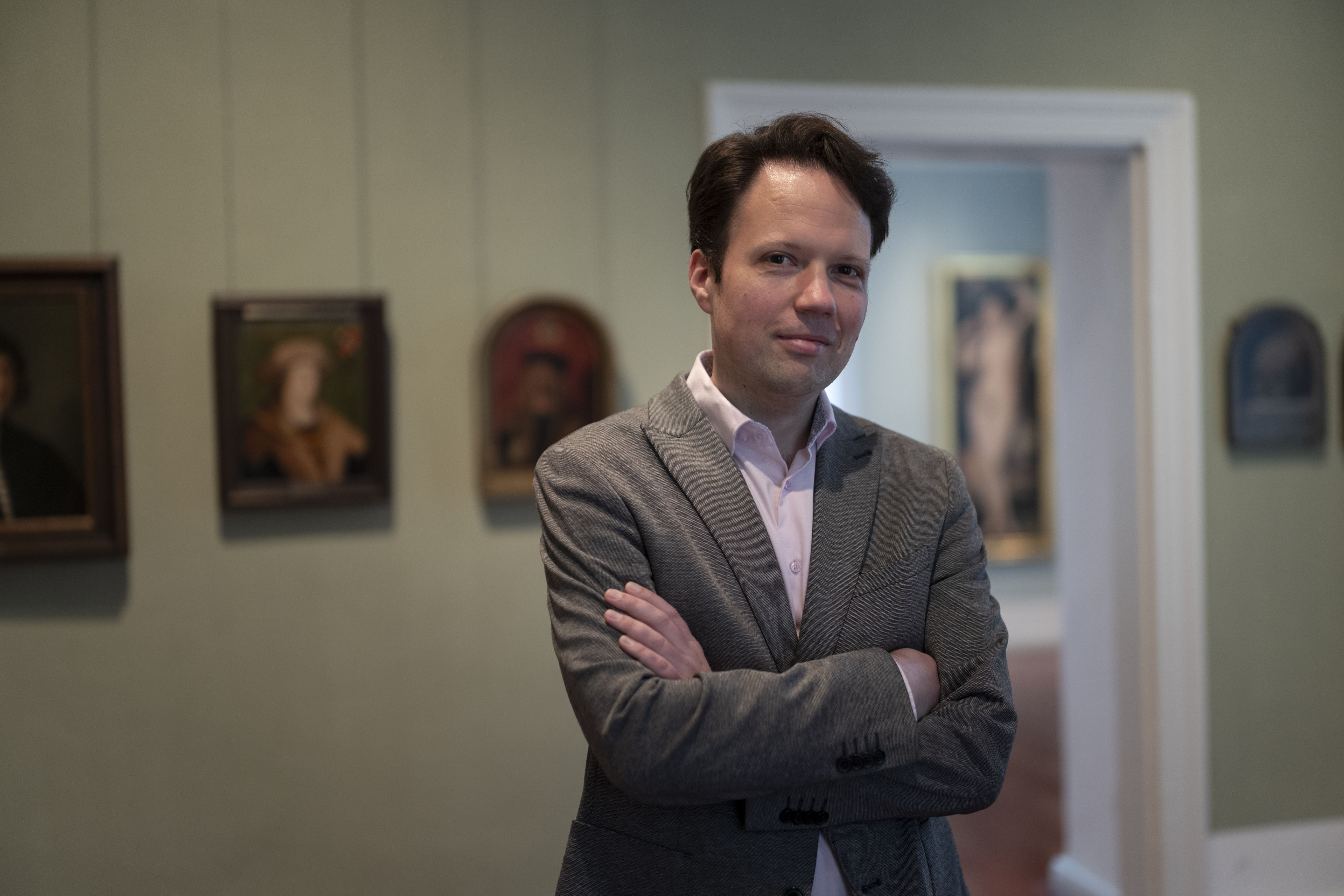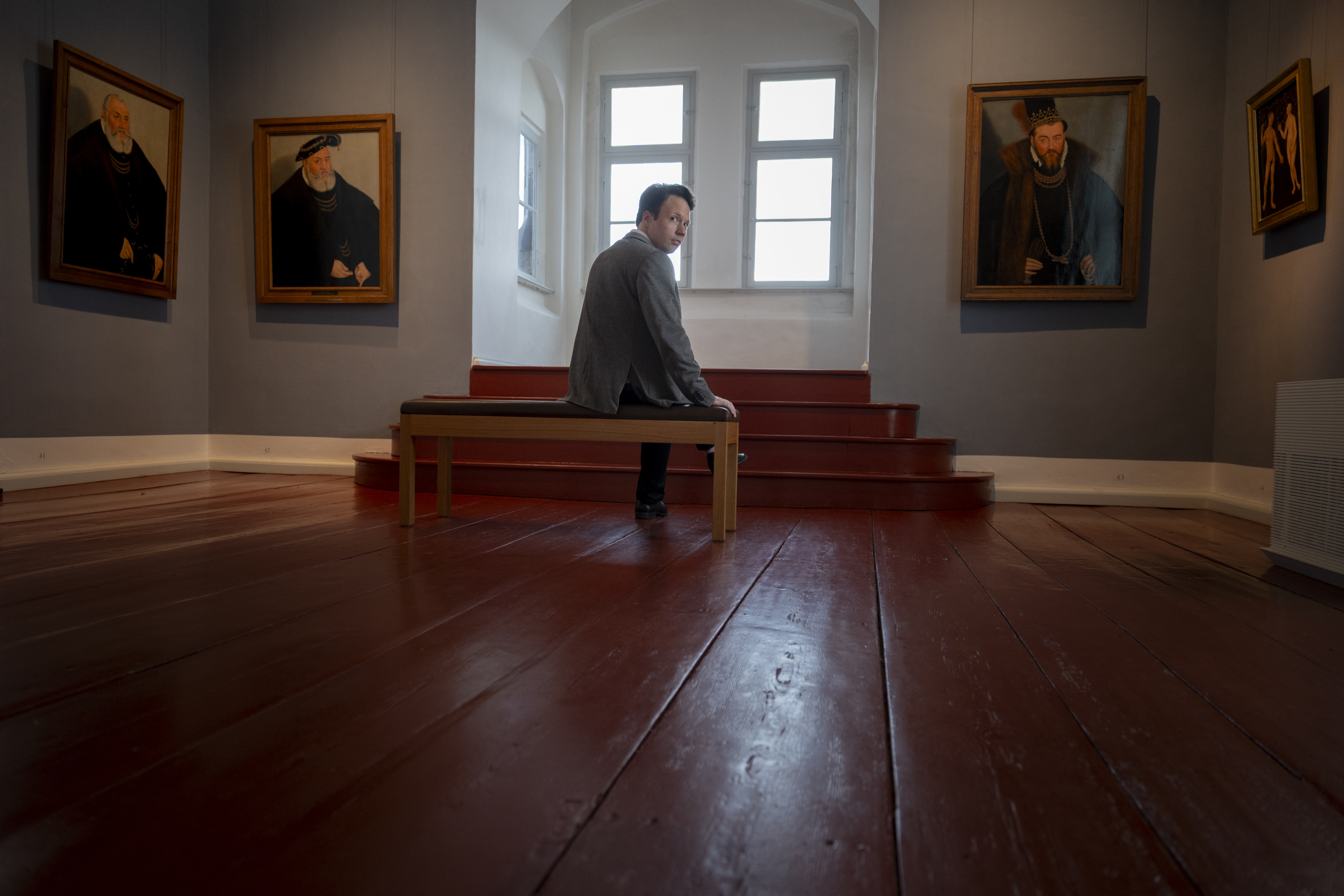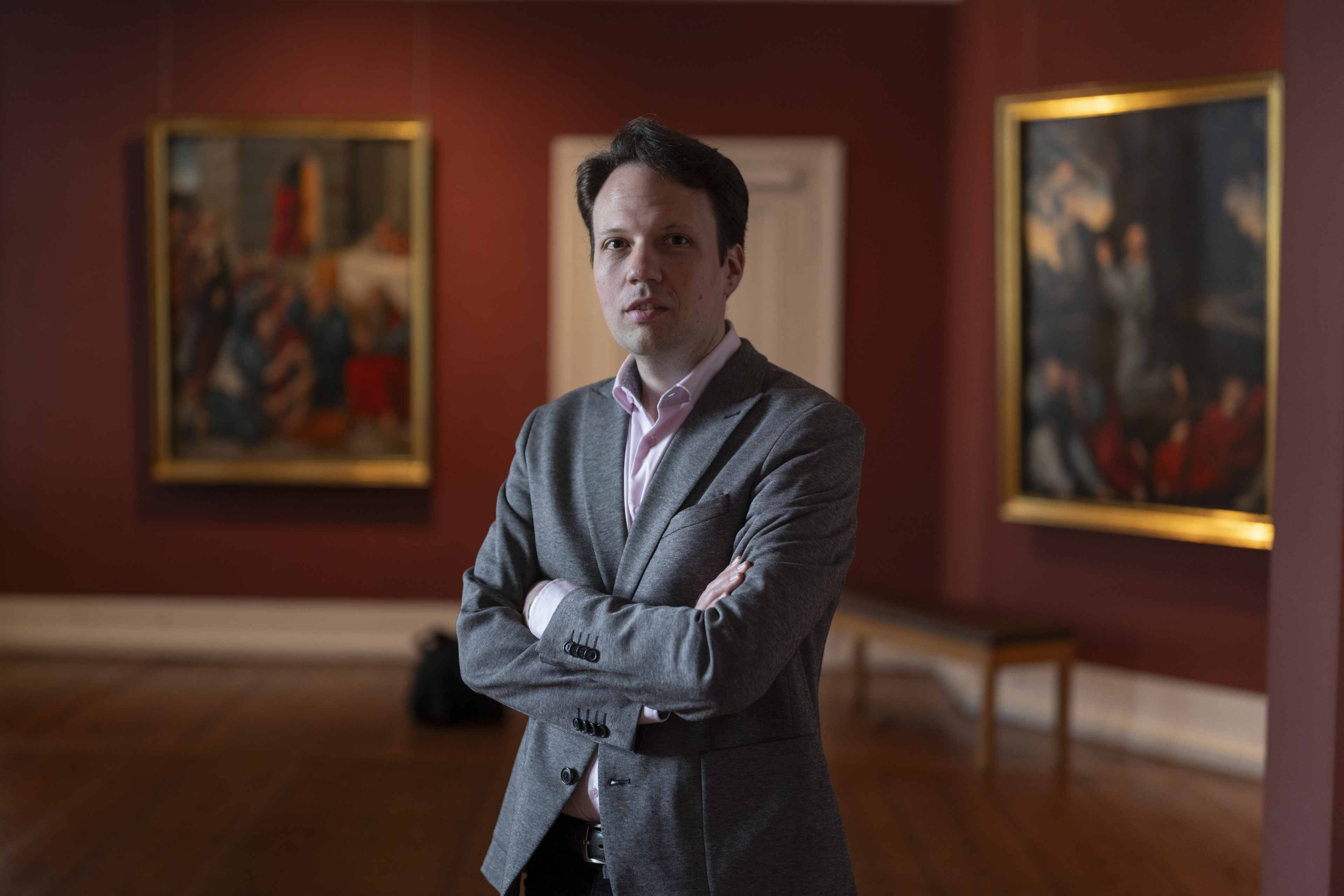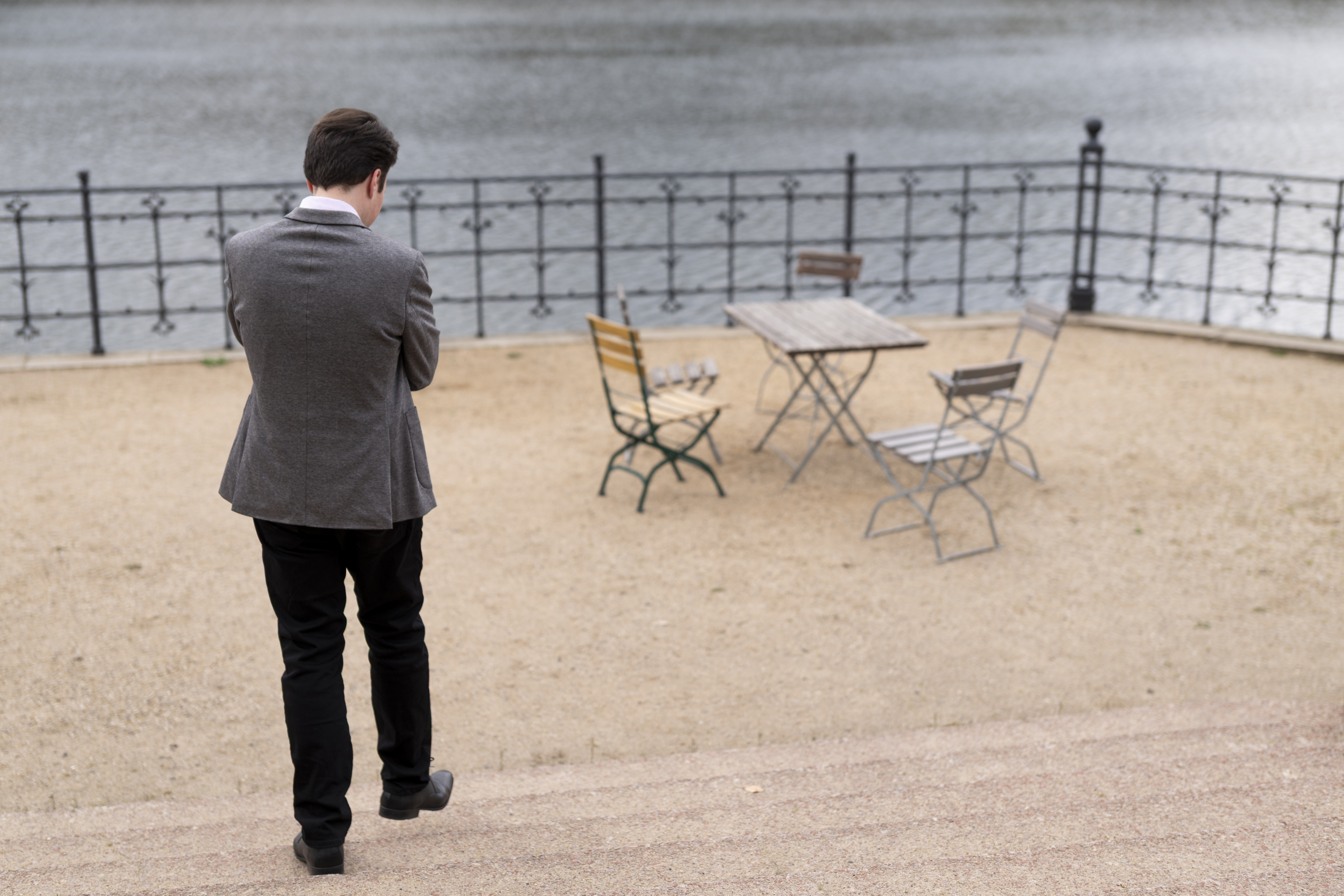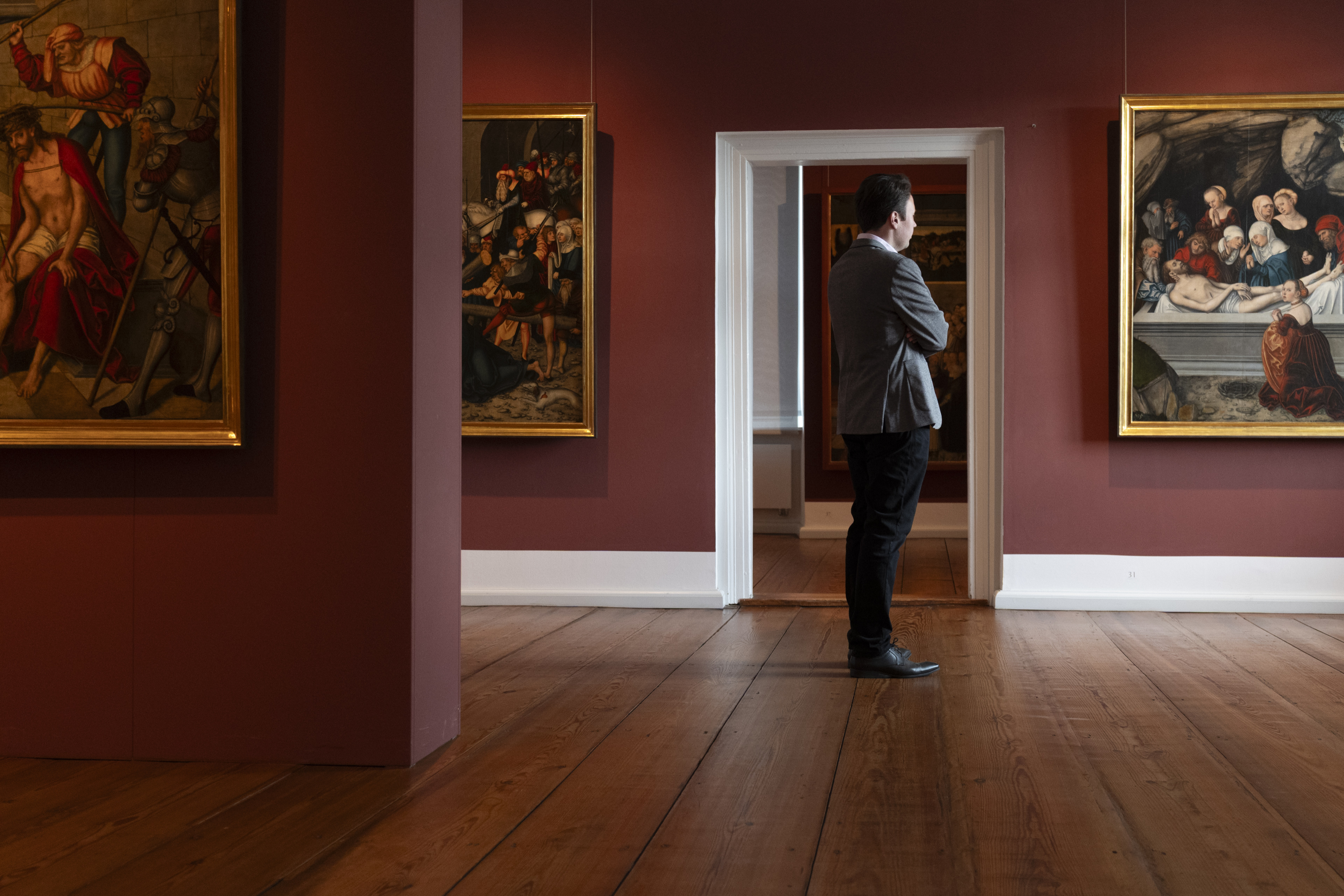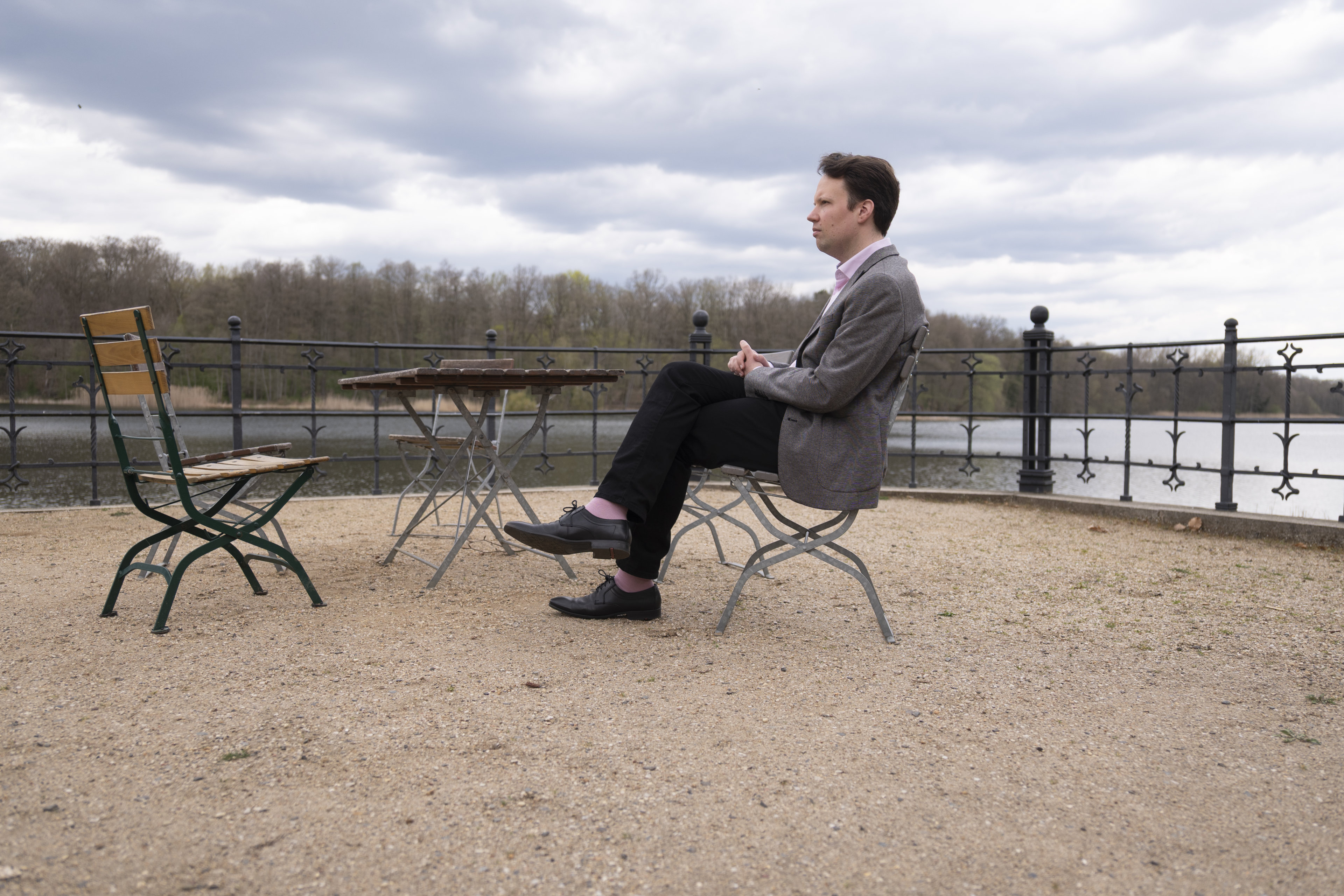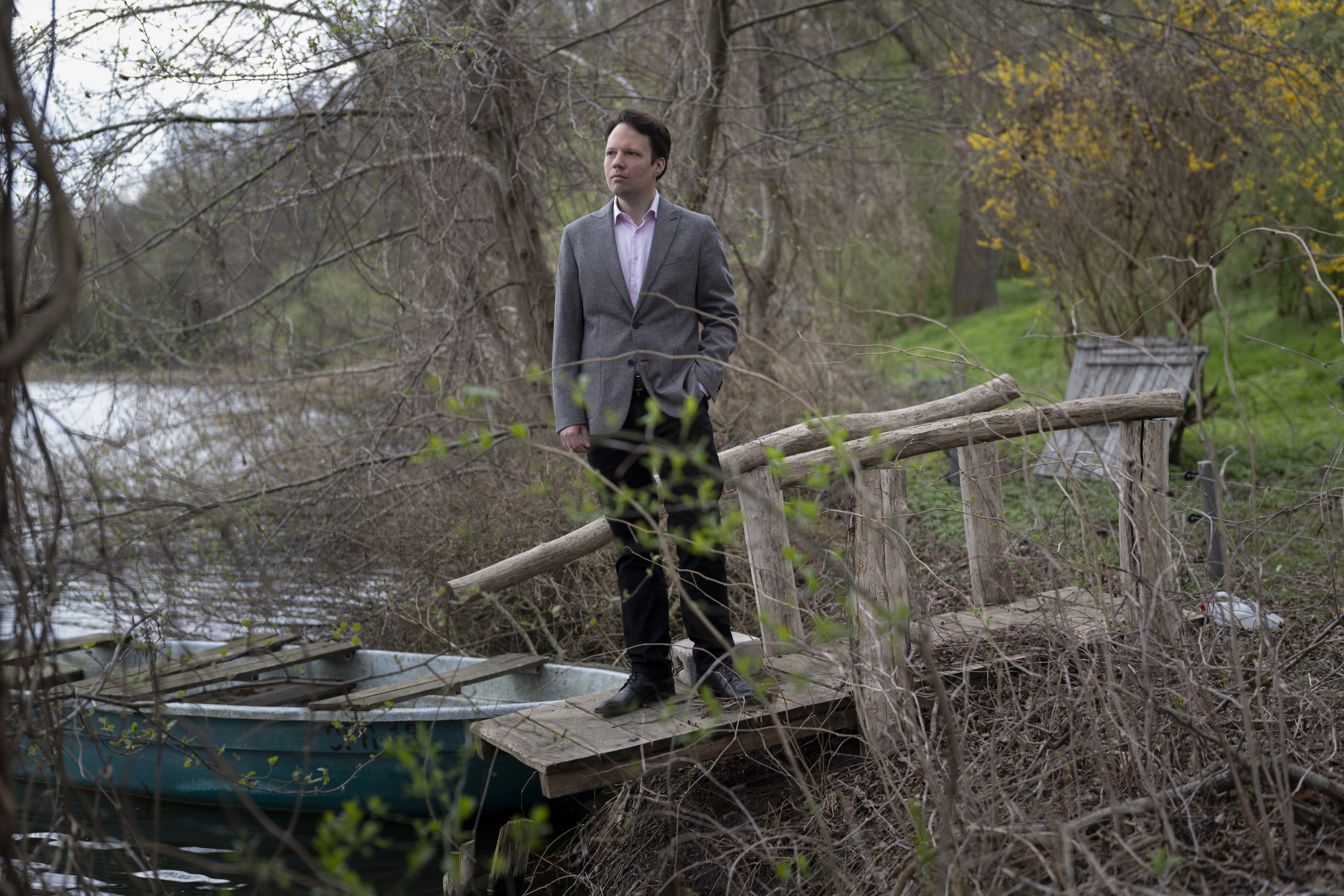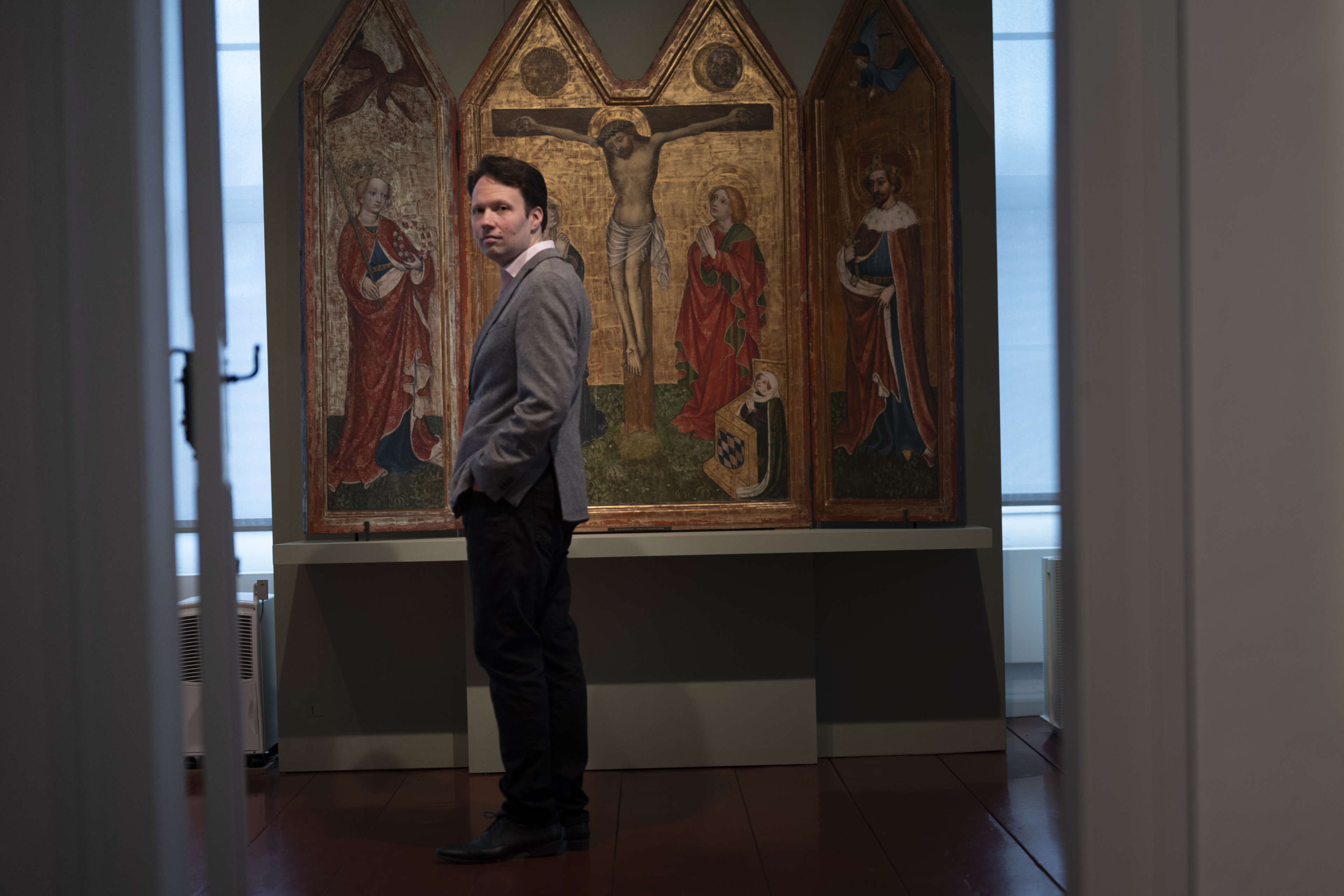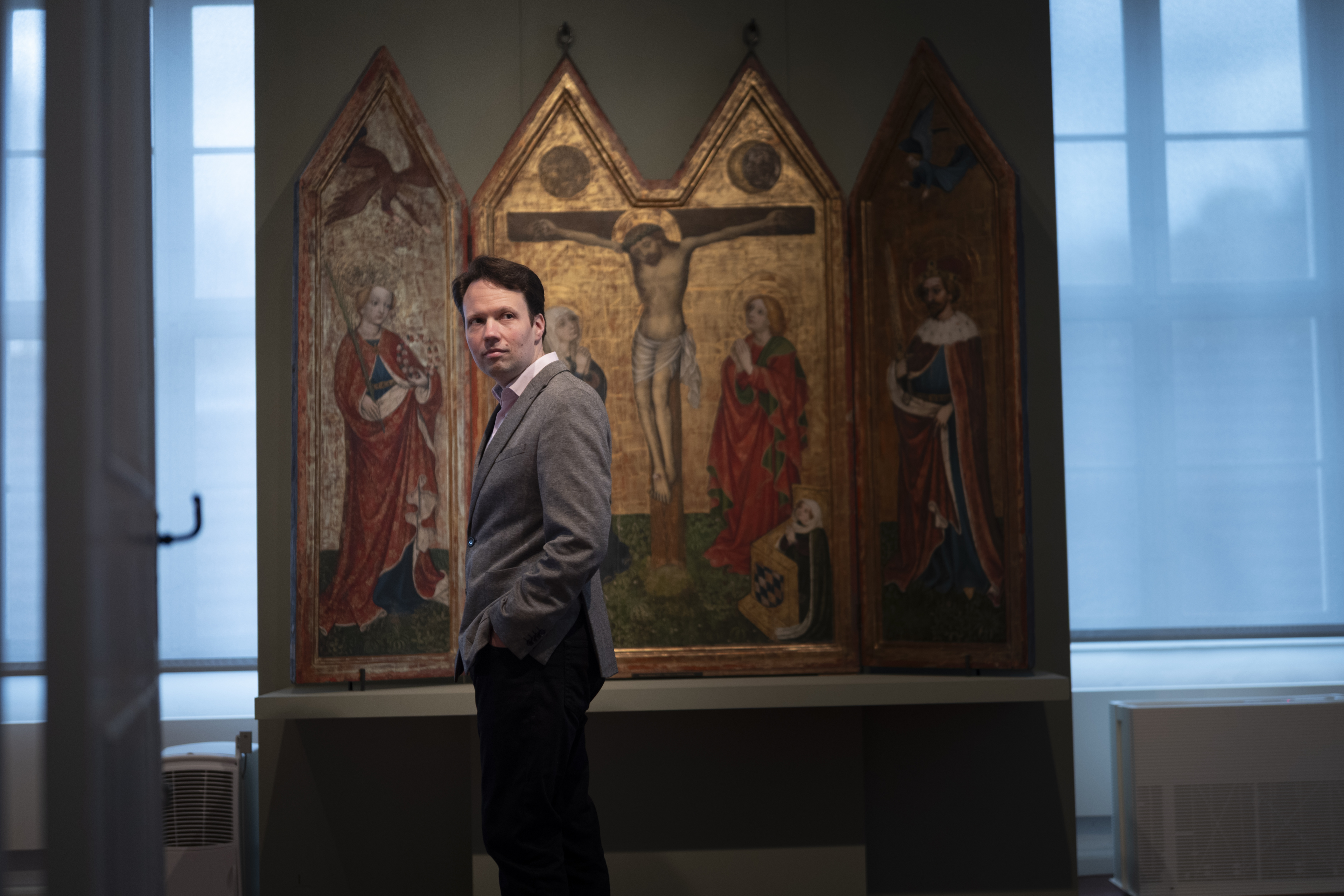Issue 20 / June 2025
The Normative Creeps in Easily
by Patrick Bahners
Theologian Michael Seewald takes a look at the dogmatic in the history of dogma
Tea or coffee? Swimming or jogging? Dogmatic or undogmatic? This third juxtaposition is the odd one out. The secular world, our everyday life as determined by individual preferences, largely consists of “adiaphora” – to use a prominent theological concept from the Reformation meaning things that one can assess in one way or another, positively or negatively, because they are irrelevant on Judgment Day when it comes to the salvation of souls. These days almost everything is a question of mindset, and this holds for one’s mindset itself in that vast spectrum which lies between optimism and skepticism. But it is precisely the choice between “dogmatic” or “undogmatic” which evades this insouciant view of matters. De facto, you can’t choose one side as well as the other. No one wants to be dogmatic.
The undogmatic Marxists have found followers in every political camp; likely only among supporters of the social-market economy are there still adherents of the pure doctrine. Why does it seem necessary to distance oneself from the dogmatists when no one actually wants to take that position? This reveals a paradoxical feature of modern society: in order to regulate itself, it produces a surplus of theory, relying on formalized and well-articulated guidelines which are precisely those it tends to distrust.
In the course of secularization the word “dogma” and its derivatives have come into general linguistic use. The complexities arising from the secular adaptation of theological vocabulary may be noted with irony by theologians. Yet those professionally responsible for dogma have their own difficulties with the subject, which have come to a head in recent times.
Every ten years since 1972 the Protestant Church in Germany has conducted a “Church Membership Study,” a representative survey that in 2022 included German Catholics for the very first time. One result of this was that in both denominations less than a third of members agreed with the statement: “I believe there is a God who made himself known in Jesus Christ.” With this item from the questionnaire the ecclesiastical social researchers had delineated the body of ideas that has caused the most fundamental dispute – but perhaps also the greatest consensus – in church history since earliest times. The creeds that are averred in church services and memorized in religious instruction are extensions of this wording.
While most of the faithful only really take an explicit stance on the question of Jesus Christ’s nature when it comes to them out of the blue, so to speak, Catholics in German-speaking countries and those with similar conditions have come to accept the vague but definite notion that doctrinal content must change in order to realize practical wishes relating to sexual morality as well as power relations and manners in the ecclesiastical sphere. In the long papacy of John Paul II, one became accustomed to a more or less tacit divergence of official doctrine from theological teaching or interpretation. What is new, however, is that in the German church those official guardians of doctrine, the bishops entrusted with this task by canon law, have fallen into line and are adjusting their pronouncements to accommodate the mood of churchgoers. In this situation, which from a world-historical perspective may be reminiscent of pre-revolutionary situations, an extraordinary institutional instrument has been created: the Synodal Path.
As a phenomenon arising within church circles, the desire for change would seem to be irresistible, but the wave swelling up from Germany is breaking on the Rock of Peter. What is to be done when a universal consensus – at least at level of the local church – proves powerless? It is quite possible that the unanimity in goals could turn into despair if absolutely no means can be found of achieving them.
Michael Seewald, who has held the Chair for Dogmatics and the History of Dogma on the Faculty of Catholic Theology at the University of Münster since 2017 – appointed at the age of 29 – is the man of the hour. In 2018 he published his book Dogma im Wandel. Wie Glaubenslehren sich entwickeln with Herder, a Freiburg-based press going back to the Romantic founding era of Catholic intellectualism, and to this very day Herder builds bridges between popular church milieus and academic theology. In 2019 it also published Seewald’s Reform. Dieselbe Kirche anders denken, both books have been translated into English (Theories of Doctrinal Development in the Catholic Church, 2023, and Catholic Perspectives on Reform, 2022), and English-language colleagues encounter in these works a spirit traditionally associated with German Catholic theology: argumentative exactitude conjoined with a sense of context – the tissue of presuppositions and the implications within arguments. Two famous theologians of this type were among Seewald’s predecessors in the chair of dogmatics at Münster, Karl Rahner and Joseph Ratzinger.
A public far removed from the Church saw in Ratzinger the embodiment of a dogmatist, a Church-critical caricature of the unnaturally rigid thinker. When he was elected pope in 2005 the media immediately defamed him with epithets such as the “Panzer Cardinal” and “God’s Rottweiler.” Does ascendancy of the flexibility party, as it were, in Catholic journalism but also in episcopal communication mean that the Church has now capitulated to its critics? The secular routine of a rhetorical distancing from dogma is based on a primitive image of dogma that stems from ecclesiopolitical polemics. Does this metaphorical way of speaking now prevail over theological education and institutional self-respect when even Church spokespersons, including ordained functionaries, seek to avoid appearing dogmatic at any price?
If there is such a tendency as to dissolve the notion of dogma in anti-dogmatic resentment, no better antidote can be imagined than Michael Seewald’s writings. His approach is to determine as precisely as possible what the Church understands and has understood to be dogma and what is typically meant to be fixed through the authoritative use of this designation – and if not everything is fixed then what, logically, will remain in flux. Popular ideas that dogmas must be timelessly valid one way or another or that a hierarchical organization naturally perpetuates itself by producing its conceptual image in the form of a pyramid of truth – these are excluded from this clarification, as they would only interfere. When dogmas are solemnly proclaimed, then dogmatization cannot be an automatic process.
Seewald was spokesperson for the Cluster of Excellence “Religion and Politics” at his university for several years. In our interview he says that what he appreciates in an interdisciplinary setting is the opportunity to “develop a feel for how other disciplines work” – as well as his own. Theology, after all, “works not so dissimilarly in most cases.” Seewald thinks that lawyers and ethicists struggle with a problem that should also be a problem for dogmatists: “How does a normative moment actually enter into the assessment of complex matters? Which door does it sneak through?”
The layman (not in the canonical but in the academic sense) may be surprised by the prospect that Seewald casually raises – one that, in Münster, may naturally emerge in cross-disciplinary discussions through the recurring pattern of certain constellations of problems. When matters are complex, i.e. when a wide range of factors and demands must be taken into account, we are used to gaining an overview by seeing things through a normative lens; but this is not a given. The assessment of complex matters might proceed differently by comprehensively weighing up all aspects of an unrepeatable individual case and without recourse to norms – that is, without relying on commandments or prohibitions, abstract guidelines meant for application to an unmanageable multitude of cases. The normative element creeps in, says Seewald, forcefully yet discreetly: “It comes like a thief in the night.”
There is a proverbial warning against professional distortions: Those who have only a hammer as their instrument, will see a nail in every problem. This “law of the instrument,” attributed to the American psychologist Abraham Maslow, is not one that Seewald wishes to observe. The dogmatist, enlightened by the history of dogma, should ask precisely the opposite question: What kind of problem was the very special instrument of dogma intended to solve and is it suitable for solving?
For the nonbeliever, dogma is the epitome of arbitrariness, whereas for the believer it may appear an irrefragably necessary part of the religious tradition. What interests Seewald about dogma are precisely those circumstances that both the pious and the impious ignore. Practically or praxeologically speaking, in the spirit of recent research on the humanities, a dogma is a very short text that entails a high demand for text production. Seewald illustrates this mechanism with the most recent dogma formally issued by a pope, the Assumption of Mary into Heaven, proclaimed by Pius XII on November 1, 1950.
Seewald regards his interest in the development of dogma – which accompanied him throughout his studies and academic training – as atypical for his generation of theologians as well as for that of his teachers. He takes up a problem once again that became acute as a result of the Marian dogma of 1950. “It was clear that there was no sufficiently developed framework of justification available to warrant this dogma that people wanted to uphold.” The dogmatists of this final period of an inter-conciliar era – a generation after the First Vatican Council and a decade before Vatican II – came up with theories of dogma development in order to arrange the scattered and seemingly fragmentary evidence for the Assumption of Mary in the biblical text and in Church tradition along the timeline in such a way that it created the impression of an accumulation of certainty, of a truth emerging from semi-latency.
Seewald says that these developmental theories “aimed to find rules of development” – rules, he dryly adds, “that do not exist.” The historicity was taken into account and immediately canceled out again by assuming a regular course of development, with what one might call a sidelong glance at the history of Marxist theory through a dogmatic concept of the history of dogma. Seewald’s theology persistently draws on theories that had already been influential in action science and textual studies when he was born in 1987, namely the postmodern critique of the historical-philosophical enthusiasm for planning.
Even in the shortest textbook of dogmatics there must be no omission of the doctrinal statement that has carried the name of the Gallic monk Vincent of Lérins from the fifth century into the twenty-first and to the remotest corners of the earth: Catholic is that “which has been believed everywhere, always and by all.” Seewald limits the utility of this standard in his dogma book to a retrospective use, for the rule can, “after the dispute, when the situation has become clearer, justify why the chosen port of call should be considered the right one; but it cannot, as a criterion in the fog of conflict, point to the port because the hallmarks Vincent adduces for orthodoxy are claimed just as much by heterodoxy.”
Suddenly this overview: in retrospect, when the dogmatist no longer needs to take sides in the dispute, he can also describe the means by which the fog was dispelled and universality established. From this perspective the dogma of 1950, with its subsequently supplied developmental narratives, was not an outlier but a model for doctrinal speech under the self-imposed obligation to provide justification.
Dogma in flux: Seewald’s alternative to organic doctrines of development, which regulate change theoretically and effectively bring it to a standstill, is inspired by Michel Foucault’s epistemology of epochal ruptures. In a kind of time-displaced or allegorical fashion, he identifies the scope of action that today’s church reform movement could draw upon by demonstrating that the era of the First Vatican Council – stored in the Church’s historical memory as a leaden age due to the homogenization of doctrine and the subordination of scholarship to the magisterium – was in fact a period of top-down activism, of intervention in tradition and a straightening of the doctrinal corpus. It is through “the development of doctrine in the nineteenth and early twentieth centuries” that Seewald is able to highlight “the paradox”: “At a time when papal regulation and theology’s fixation on authority increased considerably, this very regulation created an increased need for justification.”
Seewald also draws on the postmodern critique of reason, in the sense of a disciplined self-enlightenment of academic culture. In his view of history, authority and rationality are not polar opposites, for it was precisely in the authoritarian era that the papacy brought forth a surge of rationalization. Michael Seewald spent the academic year 2021/2022 as a Fellow at the Wissenschaftskolleg and in 2024 was appointed a Permanent Fellow. At Wiko he can exchange ideas with legal scholars who, in their own field, cannot go as far as Seewald in conceptualizing the normative as an intruder. Yet their research consistently documents how the standardization of complex matters goes hand in hand with the concentration of power in bureaucratic structures.
When Seewald asks his students which dogma was proclaimed at the First Vatican Council in 1870, he receives the invariable answer: the infallibility of the Pope. “That’s actually not correct, because the subject of the First Vatican Council was the primacy of jurisdiction.” A dogma is a statement of faith that becomes binding by being “presented” to the faithful, analogous to the introduction of a bill in parliament. “The teaching pope is merely one mode of the legislating pope, earthly representative of the supreme lawgiver.” There is thus a primacy of jurisdiction even in a metaphysical sense: the legal framework of thought impacts the theological concept of revelation, which was defined at the time of the First Vatican Council as the “proclamation of the Decreta voluntatis Dei” – the decrees of God’s will. “Revelation is a legal act, doctrine a body of law-like content, and infallibility a derivative of the primacy of jurisdiction.”
In Seewald’s work the range of conceivable alternative developments emerges through a strict reconstruction of the premises underlying official doctrine. “Where doctrine is not understood in this juridical sense, the First Vatican Council actually said nothing at all.” Seen in this light it turns out to be less regulated than Seewald’s students, in their alleged textbook wisdom, have imagined.
However, according to one of Seewald’s striking theses, the juridical mindset (which aligns the traditional faith with codified law) further expanded the pope’s definitional power over doctrinal content, even under John Paul II, and this by means of a document that had no normative legal character by dint of its text type, namely the Catechism of the Catholic Church of 1992, in whose formulation the then-Cardinal Ratzinger played a key role. Seewald’s 2020 essay on the Catholic concept of dogma bears the concise title: “Innovation out of an Anti-innovative Intent.”
Section 88 of the Catechism defines what a dogma is – or more precisely, what it means when the Church defines a dogma. “The Church's Magisterium exercises the authority it holds from Christ to the fullest extent when it defines dogmas, that is, when it proposes truths contained in divine Revelation or also when it proposes in a definitive way truths having a necessary connection with them.” The clause following “or” – the variant in which the truths are not themselves part of revelation but, merely by logical implication, are connected to the truths contained in revelation – is the innovation that is unidentified and which in fact serves to forestall innovations because doctrinal content can now be defined into the dogma, whose connection to the dogma was previously a question of logical inference and thus a matter of theological operations.
When Seewald emphasizes the contingent nature of magisterial decisions that become effective through the creation of textual facts, he does not deny that the critical analysis itself of these redefinitions by the dogmatist has something contingent about it, i.e. that he cannot demonstrate their validity by asserting inner necessity. Theological opponents of the dogmatization of the primacy of jurisdiction, such as the Munich professor Ignaz von Döllinger and his student Lord Acton, protested in the name of scholarship and history. Yet the history that they opposed to the papal narrative of the papal office was not drawn directly from the sources but, as Seewald puts it, was mediated by “ideal images” especially from the older epochs. Seewald considers the “notion of an absolute scholarly standpoint” to be unscholarly. Döllinger and Acton were themselves not spared the fate of being historicized.
Dogmatics then, as Seewald understands it, is a modern positive discipline that operates within the framework of its designated methodological settings. This academic ideal also shapes Seewald’s habitus. His enthusiasm for the subject can be inferred from the rigor of his work and the frequency of his publications, he never flaunts it. He is not on a mission to promote dogmatics (unlike the typical professor of literary studies who seeks to encourage reading) but rather dogmatics is what preoccupies him and has preoccupied him from an early age – though not to the degree that as a student he was already reading compendia of his later field rather than novels.
By his own account he has no proclivity for “biographical profundity” and has “no great motivational story,” even if such a story is often expected of a theologian and even more so from a priest. “It just interested me, so that’s why I did it.” In the manner of a mathematician or engineer, he speaks about problem-solving as a profession. This year the Deutsche Forschungsgemeinschaft (German Research Foundation) honored the scholarly excellence of his research with the Leibniz Prize, the most important research award in Germany, thus also recognizing that such excellence is indeed possible in his field.
The juridical thinking with which he is concerned has informed his own intellectual acumen or perhaps served to attract it. Legally binding declarations of truth, this way of generating obligation, are his subject and the problem he deals with. The juridical method is a school of immanent critique. When Seewald finds his readers among Catholics who clearly and unambiguously want a different kind of Church, it shows that prophetic defiance is not the sole remaining theological resource of this reform project whose proponents, in light of the rejection by Roman legal authority, often regard the argumentative work as already done.
In his essay on the 1992 catechism, Seewald interprets its redefinition of dogma in terms of the history of mentalities as an act of cultural rearmament. Under the impress of the intra-Church consequences of the upheaval of 1968, Joseph Ratzinger and his confrères in the German episcopate advocated an “outward demarcation” that was to be secured by “inward mistrust” – a mistrust of their own theological faculties. In the 1980 speech that the Archbishop of Cologne, Cardinal Joseph Höffner, gave in Fulda in the presence of Pope John Paul II during his visit to Germany, Seewald detects a “decline narrative” that could not have been “more sweeping and undifferentiated.”
In terms of content the critique is similarly clear in the context of epistemology, as seen in an essay Seewald wrote in 2016 (just prior to his appointment in Münster) entitled “What Is Relativism?” and with the sarcastic subtitle “Contours of a Theological Bugaboo,” where he criticizes Ratzinger’s notion of a “dictatorship of relativism.” Ratzinger’s thesis – that contemporary thinking has severed its relationship to truth – found considerable resonance even among secular intellectuals. Seewald noted that Ratzinger’s dictatorship formula, in the theological reception, had become an “umbrella term for all the supposed ills of our time.” His metacritical examination of this commonplace of cultural criticism amounted to an ironic point: Ratzinger’s dictum actually hindered “a more precise and truthful picture of the approaches” of postmodern theories of truth.
Ratzinger’s apocalyptic assessment of the consequences of 1968 was shaped by his own experience as a professor. Seewald suggests that the conservative faction within the Church’s magisterial leadership, gripped by a culture-critical panic, failed to place any trust in the independent nature of religion, the Church, and theology (i.e. in the coherence and integrity of their own domain) which they had otherwise proclaimed as their guiding principle. In this light it is understandable when today’s criticism of dogma – intended as church reform – is staved off as an intrusion of the anti-dogmatic impulses of secular society into the Church.
Seewald’s current research project, which has occupied him these past three years, is a deepening of the lines he drew in Theories of Doctrinal Development in the Catholic Church. “I am thinking about what is dogmatic in the history of dogma.” In his characteristically bone-dry tone, he describes the basic conceptual connection he is dissecting as an “explosive mixture.” The conflict seems built into the concept: “Dogmatics says how things ought to be, whereas the history of dogma says that everything which ought to be has developed and changed at some point.” The idea that history is the adversary of dogma is a self-evident assumption of intellectual history, but Seewald once again flips the script and explores the idea that historical study is in fact the start of the dogmatic enterprise.
So where does the normative moment in the valuation of complex matters come from? “In religions the normative sneaks in through the historical door.” In our conversation Seewald illustrates this with how popes adduce older papal pronouncements. In the magisterial texts published under the name of the recently deceased Pope Francis, self-citations by the author were increasingly used to serve legitimizing purposes. This pattern of validation can also be found among prolific professors, but such self-made dogmatism would be alien to Michael Seewald. He stays focused on the issue: “What interests me is the question: How is normativity generated through historical reference?”
The photos of Michael Seewald were taken on the lakeside terrace and in the Cranach rooms of the Grunewald Hunting Lodge. Many thanks to Kathrin Külow and Solveig Kralik for the friendly welcome and access to their rooms!
More on: Michael Seewald
Images: © Maurice Weiss
